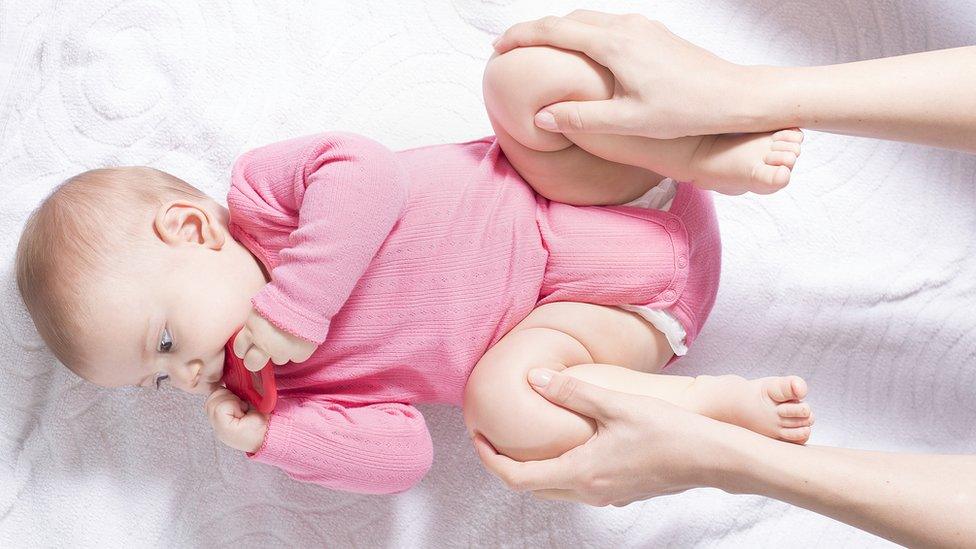My baby’s hip dysplasia was only spotted by chance
- Published
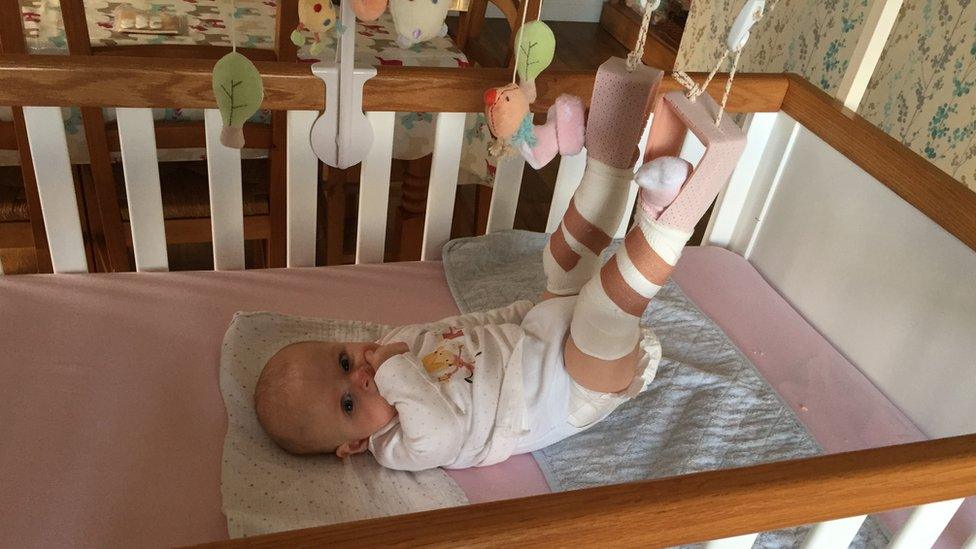
Rowan was in a cast and on a traction to treat her hip dysplasia
Routine hip checks for babies are failing to spot problems that can lead to major surgery and complications in later life, doctors have said.
Research by surgeons based in Dundee found four out of every five cases of undiagnosed hip dysplasia were missed at the six-week GP check.
They said specialist roles should be created to improve early detection rates at the first check on the maternity ward.

'It should not be down to luck'

Rowan was in a cast which kept her hips in a "froggy" position

Rowan Beattie's father Derek knew something was not right the first time he tried to change his baby daughter's nappy.
He told health visitors it was hard to manipulate her legs to get her in the correct position but he was assured she was fine. The GP check at six weeks also did not pick up her condition.
It was only when Rowan, from Carnoustie in Angus, was almost four months old and saw a physiotherapist about an unrelated neck problem that developmental dysplasia of the hip (DDH) was discovered - and only then because of the persistence of her father.
Rowan's mother Allison said they were "lucky" that a young physio, who had worked with an expert in the field, knew what to look for - but, even so, they had missed the vital window for early treatment.
"It should not be down to luck," she said. "It should be proper training or systems that make sure it is picked up at the right time."
What is developmental dysplasia of the hip?
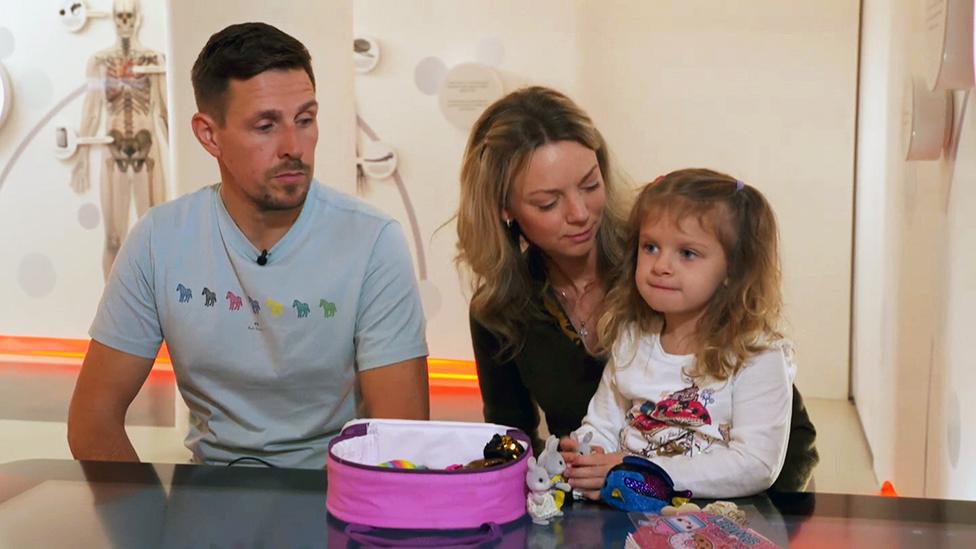
Derek, Allison and Rowan, who is now four and fully recovered
DDH is a relatively common condition. Full hip dislocation, where the ball is not positioned properly in the socket joint, affects about 1.3 cases per 1,000 but there are 6.1 cases per 1,000 where the hip socket is underdeveloped.
If spotted early, treatment can be managed quite simply but after about 12 weeks old it may mean major surgery.
Although Rowan was still a baby, she was beyond the early diagnosis window and had to undergo a week of traction. She was also put in a Spica cast, which covers the legs, waist and part of the abdomen.
Allison said the cast made breastfeeding very difficult and she found it hard to hold and comfort her child. However, she said it was easier to have a baby in a cast than a child who is not diagnosed until they start walking.
Rowan is now four and, although she will need regular checks, doctors said her hips had healed and she could lead an active life.

'Grateful to have it caught early'
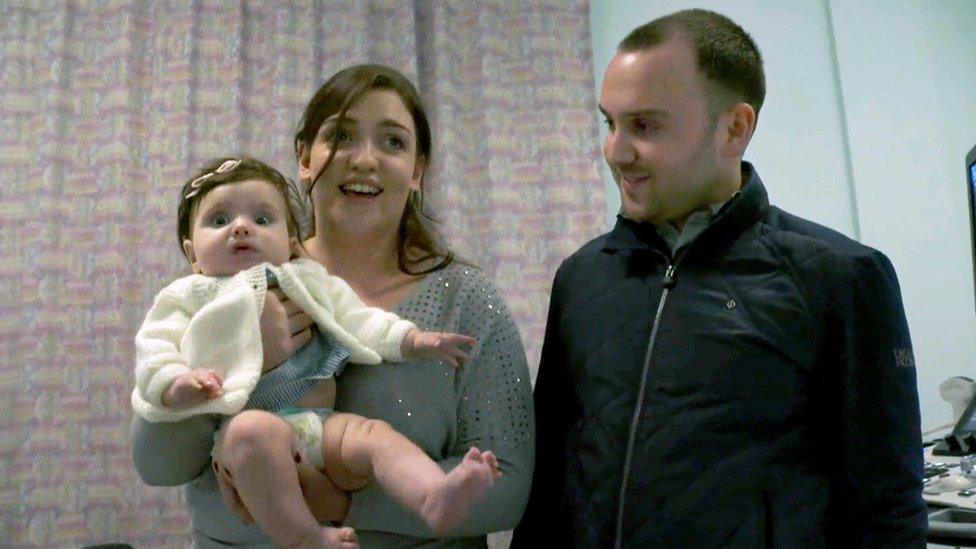
Leanne Atkinson and Jordan Thomson with daughter Elena, who was diagnosed at a month old
Leanne Atkinson's daughter Elena was diagnosed at just one month old when a special scan for big babies showed her right hip was out of place. Elena, from Guardbridge in Fife, is now four-and-a-half months old and the problem has been corrected.
Because she was so young, Elena's treatment involved a Pavlik harness - a padded harness that holds a baby's legs out to the side in a bent position. The harness allows the hip to centre in a much more natural position.
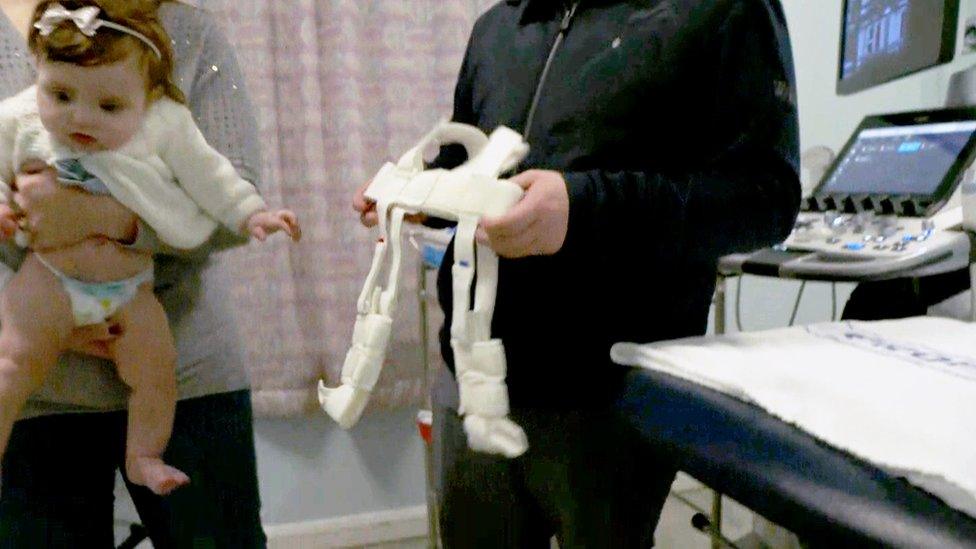
Elena was treated using a Pavlik harness
As the child grows, nature does the rest, said Donald Campbell, a consultant orthopaedic surgeon at NHS Tayside.
"It is a very natural way of getting rid of hip dysplasia," he said. "It is a very gentle, controlled method, which does not cause any discomfort."
Mr Campbell said there was a success of rate of more than 90% for cases in which a Pavlik harness was used for six to 12 weeks. "And it will give her a normal hip for the rest of her adult life," he said.
Mr Campbell said that if children are not diagnosed until walking age or later it is much harder to get a normal result.
"If we can identify it early and pick it up in the first few months of life, like Elena, then we can have a very good result," he said.

What do researchers recommend?

Mike Reidy said the people carrying out the checks needed to be experienced
Consultant orthopaedic surgeon Mike Reidy said his research found that the GP check at six weeks was only picking up one case in every five who would go on to present late with hip dysplasia.
He said he had sympathy with doctors because examining a child's hip at that age was "very difficult".
Researchers said the best time to pick up hip dysplasia was in the first 72 hours after birth.
They called for better baby checks to be done in the first week of life by expert examiners.
The surgeons also called for greater public awareness of the issue and said parents should be encouraged to use baby carriers such as those provided in the government-issued baby boxes, which kept young infants' legs in the correct "frog-like" position.
Jamie Maclean, an orthopaedic surgeon in Tayside, said he felt patients were being "failed" in not picking up the condition at an early stage.
He said: "When you visit different countries, Sweden for example, the rate of late surgery for this condition is down to the bare minimum.
"They express surprise when you discuss how large our figures are and the amount of major surgery that is taking place around the UK."
A Scottish government spokesman said: "We recognise that it is essential to ensure that the routine examination of newborns is undertaken to a high standard by appropriately-trained staff.
"Our Best Start review of maternity and neonatal care made recommendations related to the examination of newborns, including on governance and audit of the examination itself, and discussions are under way on how to implement this."
- Published29 March 2019
